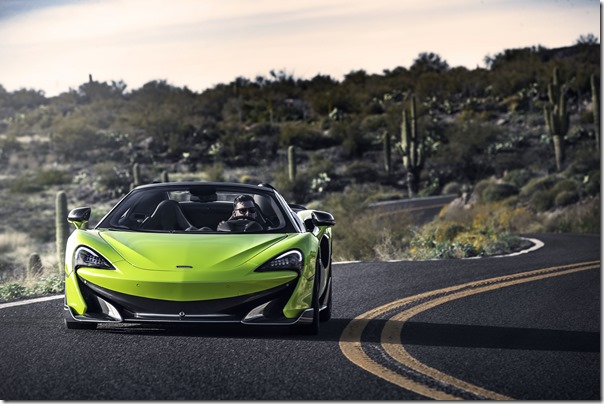See What McLaren Automotive Has Developed
There are two extraordinary capabilities of McLaren Automotive: its ability to design and its mastery of lightweight material utilization.
There are two extraordinary capabilities of McLaren Automotive: its ability to design and its mastery of lightweight material utilization. Arguably it has preeminence in both those areas.
But let’s face it: Not everyone is going to be able to afford something like a 600LT Spider ($256,500), and even if affordability is not an issue, then availability could be, as McLaren acknowledges up front that there is limited availability of its hand-assembled vehicles.

(Images: McLaren Automotive)
Which brings us to glasses. As in eyewear. Prescription lenses or sunshades.
Staring next month McLaren Automotive is launching the McLaren Vision Collection.
As you might expect, these are not just your run-of-the-mill designer frames.

There are three series: Core, Premium and Bespoke.
And it is the last two that are rather impressive.
That is, the Premium collection features frame fronts that are 3D printed titanium, which is said to be the first application of the tech for frames. The arms are over-molded titanium. And the lugs and rotary hinges are titanium, as well.
The Bespoke approach is truly individualized: the wearer’s face is 3D scanned, then the titanium frames are 3D printed. (Starting MSRP: $2,008.)
McLaren worked with a French optical company, L’Amy Group, in developing the eyewear.
Notably, the collection is using Leica Eyecare sun lenses, “which are treated with AquaDura Vision anti-reflective, hydrophobic and oleophobic coating” (i.e., no glare, resists water, resists oil).
Not entirely surprisingly, McLaren Automotive is debuting the collection at the Goodwood Festival of Speed.
RELATED CONTENT
-
On Fuel Cells, Battery Enclosures, and Lucid Air
A skateboard for fuel cells, building a better battery enclosure, what ADAS does, a big engine for boats, the curious case of lean production, what drivers think, and why Lucid is remarkable
-
Jeeps Modified for Moab
On Easter morning in Moab, Utah, when the population of that exceedingly-hard-to-get-to town in one of the most beautiful settings on Earth has more than doubled, some people won’t be hunting for Easter eggs, but will be trying to get a good look at one of the vehicles six that Jeep has prepared for real-life, fast-feedback from the assembled at the annual Easter Jeep Safari.
-
Cobots: 14 Things You Need to Know
What jobs do cobots do well? How is a cobot programmed? What’s the ROI? We asked these questions and more to four of the leading suppliers of cobots.


.jpg;width=70;height=70;mode=crop)






